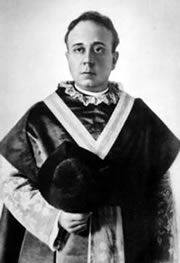
Raised in a pious family, he felt an early call to the priesthood. He entered the seminary in Jaen in 1889, then theseminary of Guadix, Grenada. Ordained on 17 April 1897.
He taught at the seminary, continued his studies, and received his licentiate in theology in Seville in 1900. He ministered in Guadix to a group of people so poor they lived in caves. He built a school for the children, and provided vocation training to the adults.
He was transferred to Madrid, and was named a canon of the Basilica of Covadonga, Asturius in 1906. His time in Guadix had impressed Pedro with the need for education for the poor. He prayed on the topic, and wrote on the need for professional training for teachers. In 1911 Pedro founded the Saint Teresa of Avila Academy, the foundation ofInstitución Teresiana. He joined the Apostolic Union of Secular Priests in 1912, wrote on the need for more teachers, and opened teacher training centers. He returned to teaching at the seminary at Jaen, served as spiritual director of Los Operarios Catechetical Centre, and taught religion at the Teachers Training School. In 1914 he opened Spain's first university residence for women in Madrid. In 1921 he was transferred to Madrid and was appointed achaplain of the Royal Palace. In 1922 he was appointed to the Central Board Against Illiteracy, and he continued to work with the Teresian Association; it received papal approval in 1924, and later spread to Chile and Italy.


